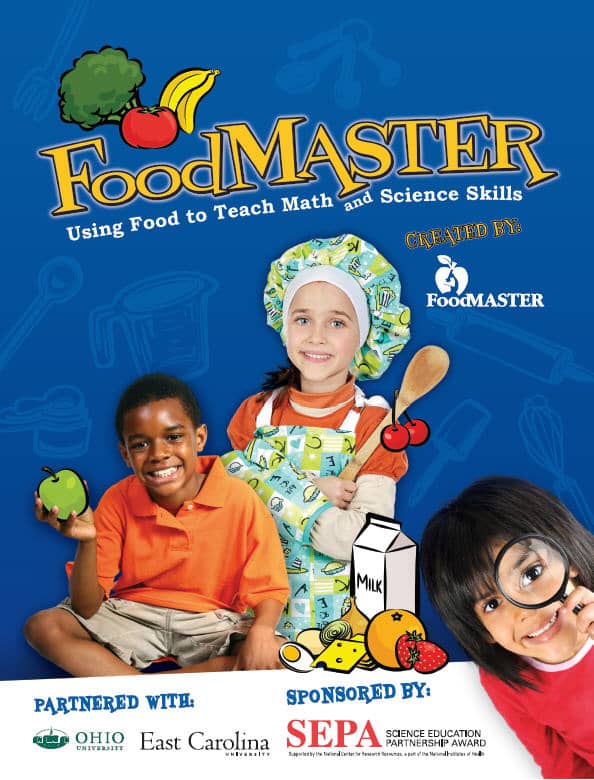What better combination than math and food. Our regular guest blogger Joanne points us to a great site that teaches our kids math and science, whilst learning to cook.
By Joanne Arcand

Computers are great, they really are. Computers, however, don’t seem to like being splattered with various milk products or dusted with flour, which is why I’ve never totally bought into the idea of online recipe books. I print out the recipe and write on it as I go. The environmental gods may preach about my killing the tree, but the heavy metals in my trashed laptop from the anticipated blender ‘explosion’ make far more damage than 1/16th of a pine tree felled for my computer paper.
It is with great enthusiasm that I recommend the foodmaster course for grades 3-5. There is a fabulous resource here. Print out the ‘teacher’s manual’ and the ‘student’s manual’ (both free) and get ready to learn some solid math and science concepts while baking cookies, chopping vegetables, and mixing drinks (not the fun kind of drinks for us adults, but we don’t need the math lesson for that.)
This was written by a team of teachers, and some of the lessons might take a little planning to do at home. “Glogerm”, for example, is used to look at the effectiveness of handwashing - the phone number to order it is provided. They have linked the lessons to standards in the USA curriculum, but (thanks to the fact that Canadian kitchens have not fully switched over to the metric system) we Canucks can take full advantage. The student handouts also provide questions to review and enhance what was learned.
Top five lessons in this guide
- Removing some of the measuring cups to force the kids to think about equivalent fractions in the recipe.
- Using egg white to look at surface tension and foam.
- Using red cabbage to look at acids and bases.
- Looking at the volume of fat released while cooking 70% fat hamburger versus lean hamburger.
- Exploring the nutritional labels on cereals, pasta, and rice and comparing the cost to prepare a serving to the nutrients given.
And, of course, there’s the eating. Yep. According to the ‘test classrooms’, the students actually ate the vegetables they experimented on without complaint.
Here’s to healthy eating and healthy choices. Sometimes even we adults can do with a course in both. Isn’t it nice when the lessons we’re giving are also nice reminders for ourselves?
Happy cooking!
Joanne Arcand is trying to juggle her role as a math teacher with her other life as mom of twin boys. She lives in Oakville, Ontario.

